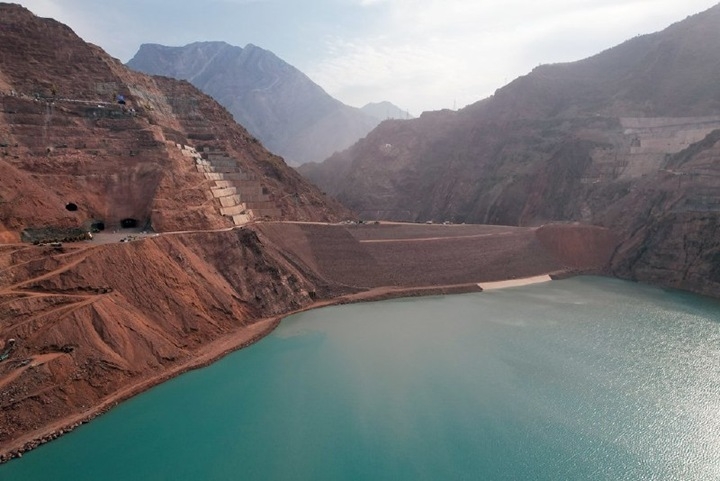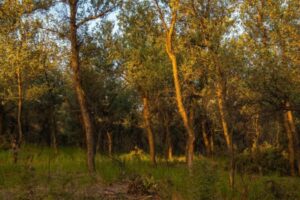Last week, our fund received long-awaited news: the World Bank Inspection Council accepted for consideration a complaint from residents of Uzbekistan and Turkmenistan, whose interests are represented by our regional organization. The complaint concerns a $350 million investment by the World Bank in the «Rogun Hydroelectric Power Station Sustainable Financing» project (P181029) and an associated technical assistance project (P178819) aimed at preparing financing and updating 2014 environmental and social documents. Together with the applicants, we submit that the World Bank and a number of co-financing institutions, which have pledged an additional more than $1 billion, have approved funding for the Rogun hydroelectric power station completion project despite serious gaps in the environmental impact assessment of the project and without taking into account the potentially catastrophic consequences of the project for the entire Central Asian region.

Right now, the main problem with the completion of the Rogun hydroelectric power station is that the existing Environmental and Social Impact Assessment (ESIA) is incomplete, based on outdated data and concepts from ten years ago, and does not adequately reflect the key risks of the project. The documentation does not fully take into account the interests of the local population living downstream, especially in the Arctic environmental disaster zone. The reduction and seasonal redistribution of the flow of the Vakhsh River during construction, filling of the reservoir (which will take at least 15 years) and operation of the Rogun hydroelectric power station will inevitably create a water shortage in the lower reaches of Vakhsh and the Amu Darya. Even according to preliminary estimates by the World Bank itself, only at the stage of filling the Rogun reservoir will the flow of the Amu Darya into the Aral Sea be reduced by 0.8–1.2 cubic meters. km annually, which will be at least 25% of the current inflow into the delta. The loss of such a colossal volume of water will aggravate the already fragile state of natural and anthropogenic ecosystems, leading to further land degradation, soil salinization and desertification.
Residents of the lower reaches of the Amu Darya, including our applicants, throughout their lives feel the consequences of the Aral disaster caused by thoughtless Soviet hydraulic engineering. Deteriorating health due to dust storms and poor water quality, loss of livelihoods due to water scarcity and land degradation, constant uncertainty – these are the realities of life in this region. The Rogun project threatens to aggravate these problems many times over. Changing the river regime (in the case of a greater redistribution of flow from the spring-summer period to the winter) will require a costly transformation of agriculture and water supply systems, and in the worst case, could lead to a complete collapse of the local socio-economic structure with enormous social consequences, including forced migration. According to official calculations alone, more than 50 thousand people will be forcibly resettled from the flood zone of the Rogun reservoir in Tajikistan, but even more people may become economic migrants from the lower countries of the Amu Darya due to the loss of sources of income.
Of particular concern is the lack of attention to the cumulative impacts of the project. The project practically does not take into account the synergistic effect of the Rogun hydroelectric power station in combination with other large water management projects, such as the Kosh-Tepa canal being built in Afghanistan. None of the experts has yet given a reasonable forecast of what total damage the Amu Darya and its dependent ecosystems and population will experience when both of these gigantic projects are put into operation. This double blow to the Amu Darya creates a situation of enormous uncertainty and risk for the entire basin, especially in the context of projected climate change and declining water resources in the region. World Bank forecasts for Uzbekistan already indicate an expected decline in water availability in the Amu Darya basin by 15–30% by 2050, which will lead to the loss of up to 250 thousand jobs in crop production alone and will require billions of dollars in investment in climate adaptation.
The Rogun hydroelectric power station completion project also poses a threat to the unique biodiversity of the region. The most valuable tugai floodplain ecosystems will be under attack, including the UNESCO World Natural Heritage Site «Tugai Forests of the Nature Reserve «Tiger Beam» and the Amudarya Nature Reserve on the border of Uzbekistan and Turkmenistan. Two species of Amu Darya false shovelnoses – sturgeon, which are on the verge of complete extinction, may finally disappear due to further changes in the flow regime and sediment transport. In order for nature to have enough water, at first it was planned to provide for spring ecological releases from the Vakhsh hydroelectric power station cascade, but as the project developed, this most important element disappeared from the design documentation for the completion of the Rogun hydroelectric power station, and without such artificial floods, the floodplains of the World Heritage Site are doomed to desertification.
It is also important to note that, unlike the situation ten years ago, when plans to complete the Rogun hydroelectric power station aroused sharp objections from Tashkent and Ashgabat, today the official authorities of Uzbekistan and Turkmenistan do not publicly oppose the completion of the dam. This silence does not mean there are no risks; rather, it may reflect a changed geopolitical environment or a lack of transparency in interstate discussions of water problems in Central Asia. However, the absence of public criticism from neighbors does not relieve both the initiators of the project and financial institutions of responsibility for ensuring the environmental and social safety of the Rogun hydroelectric power station for the entire region. Agreements on the operating modes of the Rogun hydroelectric power station, which would guarantee the minimization of risks for the population and ecosystems of the underlying countries, have not yet been prepared or signed.
The economic feasibility of the project in its current maximum version with a dam with a height of 335 m also raises questions. Although more than $5 billion has already been spent on the facility, the cost of completing the Rogun hydroelectric power station is constantly growing, has already exceeded $6 billion, which means that the generated electricity is doomed to be sold at a high enough price to recoup the costs of constructing the station. But who will become the real buyer of Rogun’s expensive energy, and even in gigantic volumes? Neighboring countries are rapidly developing their own energy sector; the solvency of Afghanistan and Pakistan is in doubt. The Tajik authorities, meanwhile, annually increase electricity tariffs for the local population, and this year they even introduced criminal penalties, including imprisonment, for evading electricity fees.
Another important aspect: the lack of reliable information and the opportunity to express their concerns deprives residents of the region of the right to vote and the opportunity to plan their future. Complainants who complained to the Inspection Board were forced to ask for confidentiality due to fears of persecution, which speaks volumes about the state of civil society in the region.
Together with the applicants whose interests our fund represents, we believe that the World Bank and other investors should suspend funding for the Rogun hydroelectric power station until a comprehensive, independent and transparent assessment of all risks, including cumulative and transboundary impacts, is carried out, taking into account the consequences of climate change and the Kosh-Tepa project. A full analysis of alternatives, including options with reduced dam heights, that could minimize negative impacts, should be undertaken. It is essential to ensure real and safe participation of the public of all countries of the Amu Darya basin in the discussion of the project and to develop fair mechanisms for benefit-sharing and compensation for damages. Ignoring these demands could lead to an irreversible environmental and social catastrophe in Central Asia.
Alexander Anatolyevich Kolotov,
director of the public fund «Rivers without Borders» (Kazakhstan)
«Nezavisimaya Gazeta»




